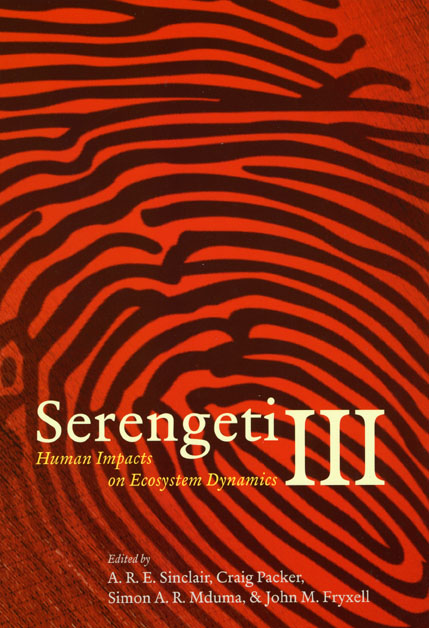The Road to Extinction

A proposal from the government of Tanzania to lay a road through the Serengeti National Park—and through the lands used during the annual wildebeest migration—could, in the words of Olivia Judson, “destroy the Serengeti as we know it.” Writing for the Opinionator blog of the New York Times yesterday, Judson laid out the case that the proposed thoroughfare would be devastating to wildlife, and the reverberations of the project could affect everything from plant life to tourism.
In her notes, Judson directs curious readers to the work of A. R. E. Sinclair, an expert on the region and the author of three books published by the University of Chicago Press. The most recent, Serengeti III: Human Impacts on Ecosystem Dynamics presents a timely and provocative look at the conservation status of one of earth’s most renowned ecosystems. (The previous two volumes—Serengeti: Dynamics of an Ecosystem and Serengeti II: Dynamics, Management, and Conservation of an Ecosystem are part of Sinclair’s long-term integrated research project to documents changes to this unique ecosystem every ten years.)
Bringing together researchers from a wide range of disciplines—ecologists, paleontologists, economists, social scientists, mathematicians, and disease specialists—Serengeti III focuses on the interactions between the natural system and the human-dominated agricultural system. By examining how changes in rainfall, wildebeest numbers, commodity prices, and human populations have impacted the Serengeti ecosystem, the authors conclude that changes in the natural system have affected human welfare just as changes in the human system have impacted the natural world. To promote both the conservation of biota and the sustainability of human welfare, the authors recommend community-based conservation and protected-area conservation.
As Judson essay makes clear, human activity will continue to impact the ecosystem of the Serengeti, and its unintended consequences could prove disastrous for the the entire region. Sinclair’s assessments of the Serengeti are required reading for anyone interested in understanding the past—and the future—of this natural laboratory for ecology, evolution, and conservation.